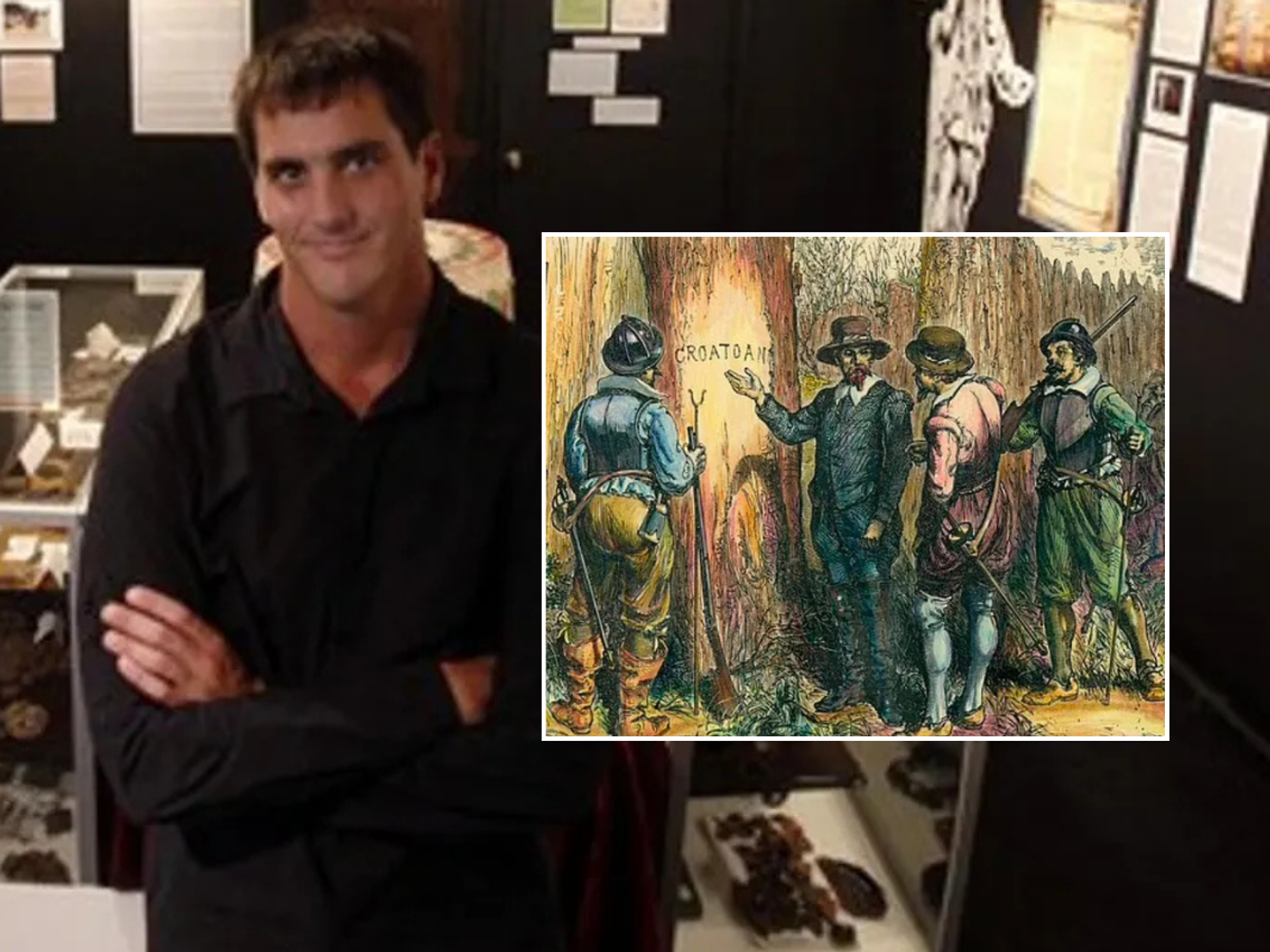'Devastating' Scottish wildfires 'will burn for DAYS' as spring heat leaves charred landscapes in its wake
WATCH: 'Devastating' Scottish wildfires 'will burn for DAYS' as spring heat leaves charred landscapes in its wake
A high pressure system has sat stationary above Scotland for around a fortnight now - and its countryside is paying the price
Don't Miss
Most Read
Trending on GB News
A "devastating" string of wildfires will keep burning across Scotland for days to come, fire chiefs have warned, after a week of unseasonably hot weather.
Saturday marked the end of yet another extreme wildfire warning for Scotland, with cooler air and occasional showers promising a brief respite for the Scottish Fire and Rescue Service.
The week started with a frightfully fast-moving blaze sweeping up from Newton Stewart in Dumfries and Galloway, venturing as far north as East Ayrshire and billowing plumes of smoke large enough to be photographed by NASA satellites.
It was five days before fire crews were content they had successfully brought it under control, aided by helicopters dumping water from Loch Doon.
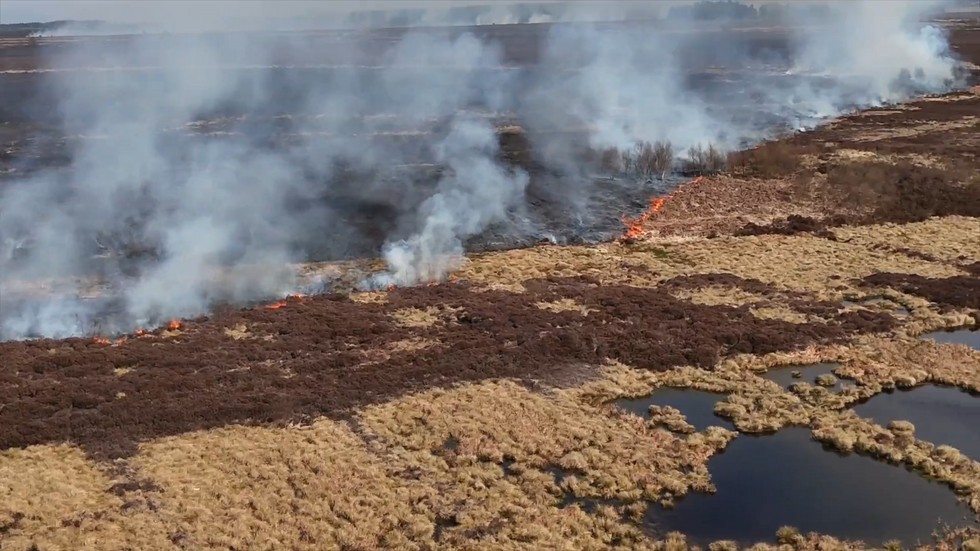
GB News attended the ongoing fire at Palacerigg Country Park this week and watched flames tear through bone-dry grasslands
GB NEWS
But with barely enough time to draw breath, fires emerged throughout the week in every corner of the country - and limited access to the islands of Skye, Bute and Arran have proved to be particularly challenging for the SFRS.
Not all fires were in remote parts of the country either. Fires in Bonhill in West Dunbartonshire and the Palacerigg Country Park outside Cumbernauld near Glasgow were a little too close for comfort for some.
GB News attended the ongoing fire at Palacerigg Country Park this week and watched flames tear through bone-dry grasslands, peatland and shrubbery in real time, rumbling across the land by tens of metres every hour.
A Scottish Fire and Rescue Service spokesman said: “As a precaution, members of the public are being asked to avoid the area and those in the local area should close windows and doors.”
The vast majority of the country has been basking in never-ending spring sunshine, with the added benefit of summer temperatures - caused by an omega blocking pattern sitting above the British Isles.
MORE ON WILDFIRES IN BRITAIN AND BEYOND:
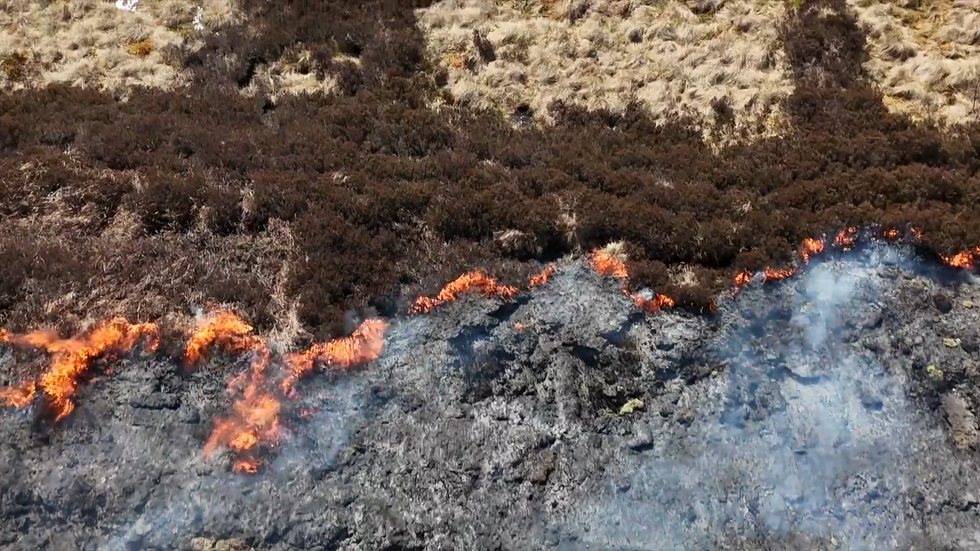
Members of the public are being asked to avoid the area and those in the local area should close their windows and doors, SFRS said
GB NEWS
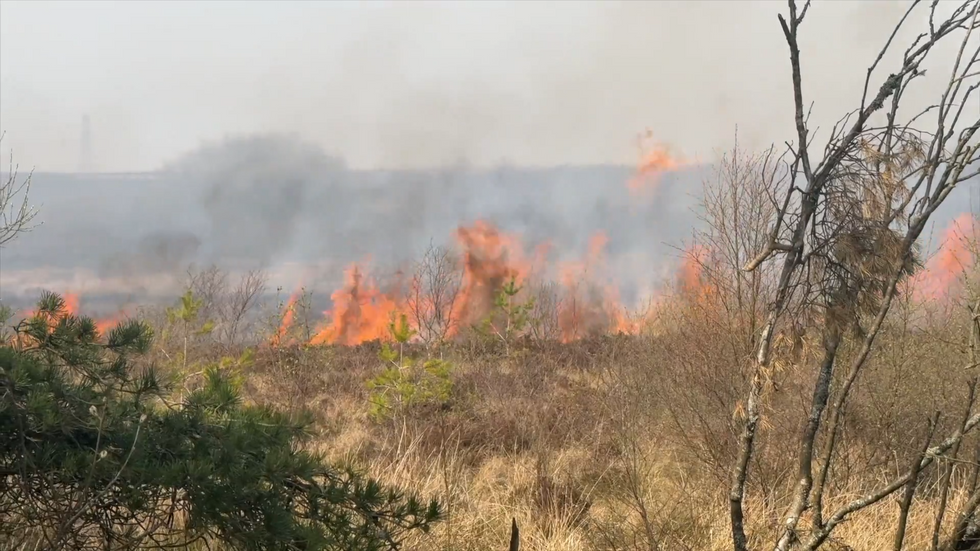
Warm temperatures and a lack of rain have dried out the earth and much of the vegetation, providing perfect conditions for fires to take hold
GB NEWS
According to the Met Office, “Omega blocks are named due to pattern they form which resembles the uppercase Greek letter omega, Ω.
“An area of high pressure will be sandwiched in between two lows to the east and west, and also slightly to the south.
“These blocks frequently occur on the eastern edges of the Atlantic and eastern Pacific, and can lead to easterly flows to the UK.”
A high pressure system has sat stationary above Scotland for around a fortnight now, forcing the jet stream, which typically moves our weather systems eastward across the country into Europe, to divert around us - and is currently dumping all our usual spring rain on Spain and Portugal.
Warm temperatures and a lack of rain have dried out the earth and much of the vegetation, providing perfect conditions for fires to take hold and keep burning.
SFRS Wildfire Capability Lead and Area Commander for the Highlands, Michael Humphreys, told GB News that data of wildfires subdued over the last ten years shows “it’s normally some sort of human behaviour that creates the fire".
He said: “[It’s] a combination of accidental and deliberate can come into that, but the main prevention is really making sure any cigarettes are completely out, only using barbecues in specific areas and following the outdoor access code.
“Please - enjoy it but act responsibly out there and let’s keep our areas safe.”
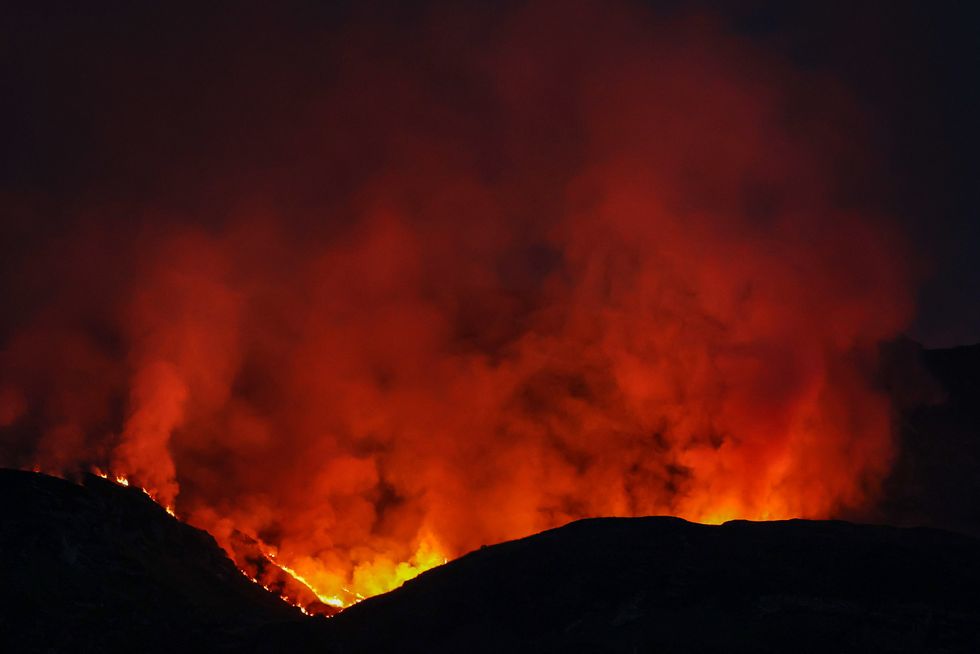
Limited access to the islands of Skye, Bute (pictured) and Arran have proved to be particularly challenging for the SFRS
GETTY
Gathering data on wildfires has allowed the SFRS to invest in 10 new all-terrain vehicles coming online to assist firefighters tackling blazes in remote regions of Scotland’s rugged landscape.
“One of them has just been used recently at one of the wildfires we attended,” explained Michael, “and it helped us tackle it pretty effectively.
“So we have new resources, new leafblowers to push the fire away and out and 14 wildfire tactical advisors around the service.
“We’ve never been better equipped to deal with wildfires, but equally, prevention is better than the cure.”
Severe wildfires have most often been tackled in the Highlands, but this past week alone the fire service has tackled no fewer than ten significant fires burning for an extended time throughout Scotland.
Deputy assistant chief officer Kenny Barbour, head of prevention, protection and preparedness at SFRS, said: “Wildfires have the potential to burn for days, as we’ve seen this week in Dumfries and Galloway, and they spread through vast areas of land in our countryside, which is devastating for those who live nearby.
“Our firefighters will continue to work with local landowners and other partners to bring these fires under control.”
The Cumbernauld fire at Palacerigg Country Park was finally extinguished at 8.30am on Saturday morning, after taking a devastating toll on North Lanarkshire’s peatlands, leaving behind hectares of blackened landscape.
This weekend’s cloud cover and showers across the Central belt of Scotland might provide some light relief for our embattled fire crews, but the MET Office says the spring sunshine is expected to continue into next week.




